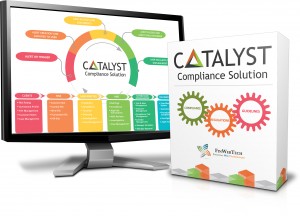FINRA warns BDs on AML & the Adequacy of Surveillance Systems

Written By: Don Lee
FINRA’s Executive Vice President of enforcement Brad Bennett highlighted two trends that FINRA is seeing in enforcement during his speech at SIFMA’s AML and Financial Crimes conference. Firstly, he mentioned that firms must have an adequate system for monitoring suspicious activities. These systems must be properly calibrated, modified and tailored to the firm’s business model. He further said that firms should think about the various types of high risk activities flowing through their firms, and if these transactions are being properly captured with the appropriate thresholds. This highlights that FINRA is seeing more firms using technology in their AML and transaction monitoring; this is also evident in their exam priorities letter for 2016. Many firms are still relying on their clearing firm’s generic exception reports. These generic exception reports are not tailored to the firm’s business model and risk activities, which opens the firm to the risk of not identifying red flags relevant to their business model. Bennett stated that if the transaction monitoring is being delegated to someone outside of AML which is a common industry practice, the delegate must be appropriately trained for the task. The use of backoffice or untrained persons not familiar with AML to spot red flags also increases the risk of red flags going unnoticed.
Secondly, he mentioned the Penny Stocks, pump and dump scheme and the ability to identify suspicious trading activities. Most firms who engaged in low priced securities are again relying on their clearing firm’s exception reports which are inadequate for effectively monitoring these transactions. Firms must also conduct due diligence on the securities being deposited and sold.
The use of technology is becoming increasingly more important for firms of all size to consider, as regulations become tighter and new rules are constantly being proposed. Firms that are still relying on generalized exception reporting for their transaction monitoring must re-visit their respective AML and compliance programs to ensure they are able to assess the risk of their business and identify all of the red flags. The use of technology is an effective and cost effective method of analyzing transactions. Using an automated system allows firms to define the rules and what patterns must be flagged for review. There is no reliance on persons not familiar with AML or inexperienced in compliance in the review of transactions. The overall result is an effective and efficient review process which reduces the firm’s risk of not identifying red flags.
Regarding enforcement’s considerations for proceeding with a Wells action against a firm or an individual, Bennett said enforcement considers the following five factors:
- The extent the individual was involved
- Any corrective actions taken to resolve the deficiency
- The extent of underlying conduct and degree of investor harm
- Willful blindness or intentional participation in the violations
- Recidivism
Firms must maintained tailored AML policies to the firm’s risk parameters and business models.
FinWebTech‘s Catalyst automated compliance solution provides a cost effective solution to firms of all sizes. Catalyst provides automated transaction monitoring, risk rating, risk identification, supervisory controls, trade blotter management and other tools that helps firms manage and enhance their compliance programs. Catalyst’s rules engine can be customized to fit each firm’s unique business model and help identify their high risk transactions during the review process. Catalyst provides workflow for documenting alerts, reporting and audit logs.
About FinWebTech
FinWebTech is a Service as a Software (SaaS) company developing compliance automation applications to assist firms with ‘Big Data’ and the growing needs of compliance in the financial services industry. FinWebTech’s inaugural product Catalyst provides firms with: Automated Transaction Surveillance for AML and Suitability; Risk Assessments and Risk Management tools; Trade Blotter Management, AML Management, Suitability Management and FINRA 2111 controls; Supervisory and Management Controls, Audit Logs, KYC, Document Repository and other tools to assist compliance and AML departments manage their programs and reduce risk. Unlike other applications, Catalyst is unique because it was designed by an industry experienced Chief Compliance Officer for compliance. FinWebTech’s mission is to provide all financial services firms with access to compliance automation and has priced its products to give small to medium sized firms access to technology.
For more information on FinWebTech and Catalyst, please contact Don Lee at
don.lee@finwebtech.com or 305-409-1307
